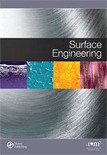
SURFACE ENGINEERING
Scope & Guideline
Catalyzing Discoveries in Surface Technology
Introduction
Aims and Scopes
- Surface Coatings and Treatments:
Research on various surface coatings, including metallic, ceramic, and composite coatings, aimed at improving wear resistance, corrosion resistance, and other surface properties. - Tribological Performance:
Investigation of friction, wear, and lubrication mechanisms in surface engineering, focusing on improving the tribological properties of materials. - Nanotechnology and Advanced Materials:
Application of nanomaterials and advanced composites in surface engineering to enhance functional properties such as self-cleaning, anti-corrosion, and biocompatibility. - Laser Processing Techniques:
Utilization of laser technologies for surface treatment, coating deposition, and texturing to achieve desired surface characteristics and functionalities. - Biocompatibility and Antimicrobial Surfaces:
Development of coatings and surface treatments that enhance biocompatibility and provide antimicrobial properties for medical and biological applications. - Environmental Resistance:
Research on the performance of coatings under extreme environmental conditions, including high temperature, corrosive environments, and biofouling.
Trending and Emerging
- Smart and Adaptive Coatings:
The development of coatings that respond to environmental stimuli or changes, such as temperature or pH, is on the rise, indicating a trend towards multifunctional and intelligent surfaces. - Sustainable and Eco-friendly Coatings:
There is an increasing focus on environmentally friendly materials and processes for surface treatment, driven by global sustainability initiatives and regulatory pressures. - Additive Manufacturing and Surface Engineering:
Integration of additive manufacturing techniques with surface engineering is becoming prominent, highlighting the need for tailored surface properties in 3D-printed components. - Advanced Nanostructured Surfaces:
Research on nanostructured surfaces that enhance tribological performance and provide unique functionalities such as self-cleaning and anti-fogging is emerging as a significant area of interest. - In-situ Characterization Techniques:
The use of advanced in-situ characterization methods to study surface phenomena in real-time during processing is trending, providing deeper insights into surface behavior.
Declining or Waning
- Traditional Coating Processes:
Research related to conventional coating processes such as electroplating and simple spray techniques has seen a decline as newer and more advanced coating technologies gain traction. - Basic Tribological Studies:
Studies focused solely on fundamental tribological principles without the integration of advanced materials or coatings are becoming less prominent, as the field shifts towards more applied research. - Static Surface Properties:
Research emphasizing static surface properties, rather than dynamic interactions and performance under operational conditions, is diminishing in favor of more comprehensive studies.
Similar Journals

JOURNAL OF THERMAL SPRAY TECHNOLOGY
Catalyzing Progress in Thermal Spray MethodologiesJOURNAL OF THERMAL SPRAY TECHNOLOGY, published by SPRINGER, is a leading platform dedicated to the advancement of thermal spray processes and materials, providing high-quality research pertinent to both industrial applications and scientific inquiry. With an ISSN of 1059-9630 and E-ISSN 1544-1016, this journal holds a distinguished position within the academic community, as evidenced by its Q2 rankings across multiple categories including Condensed Matter Physics, Materials Chemistry, and Surfaces, Coatings and Films. The journal serves as an essential resource for researchers, professionals, and students, offering insights into innovative methodologies, emerging technologies, and critical reviews within the field of thermal spray technology. As it converges from 1992 to 2024, it continues to expand its impact, fostering collaboration and dialogue among experts, and contributing significantly to material science disciplines. With a consistent focus on cutting-edge research and practical applications, this journal remains vital for those invested in the future of materials technology.

TRIBOLOGY LETTERS
Driving Progress in Mechanical Engineering and Material ScienceTRIBOLOGY LETTERS is a distinguished peer-reviewed academic journal published by SPRINGER/PLENUM PUBLISHERS, focusing on advancements in the field of tribology and its applications across various engineering domains. With an ISSN of 1023-8883 and an E-ISSN of 1573-2711, this journal serves as a crucial platform for disseminating cutting-edge research and technological innovations, operating from its esteemed headquarters in the United States. The journal is categorized in the Q2 quartile across multiple domains including Mechanical Engineering, Mechanics of Materials, Surfaces and Interfaces, and Surfaces, Coatings and Films, showcasing its significant impact within the respective fields. With Scopus rankings placing it in the top 25% for Engineering and top 20% for Physics and Astronomy related categories, TRIBOLOGY LETTERS continues to be an essential resource for researchers, professionals, and students looking to deepen their understanding of tribological phenomena and enhance their applications in industry and technology. While it does not currently offer open access options, the journal continues to invite high-quality contributions that contribute to the ongoing dialogue and advancement in tribological science.

China Surface Engineering
Pioneering research in materials and coatings.China Surface Engineering is a prominent academic journal dedicated to the field of materials science, with a specific emphasis on surfaces, coatings, and films. Published by the Chinese Association of Science and Technology (CAST), this journal serves as an essential platform for researchers, professionals, and students seeking to disseminate knowledge and advancements in surface engineering technologies and innovative applications. With its ISSN 1007-9289 and E-ISSN 1007-9289, it has established a distinct presence since its convergence in 2016, and continues to evolve in the rapidly advancing materials science landscape through to 2024. Although currently categorized in the Q4 quartile of its field, with a Scopus ranking of #103 out of 132 in Surfaces, Coatings and Films, the journal plays a critical role in contributing to the discourse surrounding surface treatment and modification, fostering advancements that are pivotal for industrial applications. As an avenue not only for knowledge transfer but also for collaboration among scientists worldwide, China Surface Engineering is crucial for anyone engaged in research or practical applications in this domain.

Surfaces
Transforming Perspectives on Material InteractionsSurfaces is an esteemed academic journal published by MDPI in Switzerland, operating as an open access platform since 2018. With an E-ISSN of 2571-9637, this journal focuses on the interdisciplinary advancements in the fields of chemistry, materials science, and physics, particularly in the domain of surfaces and interfaces. As a testament to its scholarly impact, Surfaces is ranked in the second quartile for multiple categories as of 2023, including Chemistry (miscellaneous), Materials Science (miscellaneous), Surfaces and Interfaces, as well as Surfaces, Coatings and Films, showcasing its relevance within these disciplines. Researchers and professionals seeking to disseminate and acquire knowledge on the latest innovations can benefit from the journal's rigorous peer-review process and commitment to quality, ensuring visibility and accessibility for current developments in surface technology and material interactions. With a growing archive from 2019 to 2024, Surfaces stands out as a vital resource for the academic community.
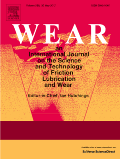
WEAR
Pioneering Research in Material BehaviorsWEAR is a premier journal published by Elsevier Science SA, specializing in the field of materials science, particularly in the dynamics of wear and friction at the micro and nanoscale. Since its inception in 1957, this esteemed journal has evolved into a critical resource for researchers, professionals, and students alike, showcasing cutting-edge research and developments that significantly impact the disciplines of Condensed Matter Physics, Mechanics of Materials, Materials Chemistry, and Surfaces and Interfaces. With an impressive impact factor and consistently recognized as a Q1 category journal across various Scopus rankings, WEAR ranks in the top tiers of its field, underscoring its importance and influence within the academic community. The journal serves as a vital platform for disseminating innovative findings and applications, fostering scholarly dialogue, and advancing the understanding of material behaviors under wear and friction processes. For those keen on accessing the latest research in these dynamic areas, WEAR is an indispensable resource, promising a comprehensive collection of high-quality articles that reflect the forefront of scientific inquiry.
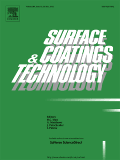
SURFACE & COATINGS TECHNOLOGY
Transforming Ideas into Advanced Coating SolutionsSURFACE & COATINGS TECHNOLOGY is a premier academic journal that has been at the forefront of research and innovation since its inception in 1986, diligently published by Elsevier Science SA. With an impressive range of studies focusing on surface and coatings technologies, the journal has established itself as a leading platform within the fields of Chemistry, Condensed Matter Physics, and Materials Science. Notably, it holds a distinguished Q1 ranking in multiple categories, showcasing its relevance and high impact in the academic community. Furthermore, it is recognized for its rigorous peer-review process and is indexed in esteemed databases, maintaining its strong position with a ranking of #17 in Surfaces, Coatings, and Films. Although the journal does not currently offer open access options, it continues to be a crucial resource for researchers, professionals, and students seeking insights into cutting-edge developments and applications in the domain of surface engineering. With a commitment to advancing knowledge across these disciplines, SURFACE & COATINGS TECHNOLOGY is an essential read for anyone interested in the latest trends and technologies shaping the industry.
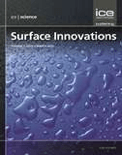
Surface Innovations
Innovating Tomorrow's Surface Technologies TodaySurface Innovations, an esteemed journal published by Emerald Group Publishing Ltd, serves as a crucial platform for researchers and professionals working within the fields of Materials Chemistry, Process Chemistry and Technology, and Surfaces, Coatings and Films. Launched in 2013, this journal has garnered attention for its commitment to advancing knowledge and innovation, holding a distinguished Q3 ranking in multiple categories as of 2023. With a focus on the latest methodologies and applications in surface science, Surface Innovations not only facilitates the dissemination of cutting-edge research but also encourages interdisciplinary collaboration among scientists and engineers. While not an open-access journal, it offers numerous options for accessibility to engage a wide array of audiences, making it a valuable resource for those looking to expand their understanding and expertise in this rapidly evolving field. The journal's consistent inclusion in high-ranking Scopus categories further underscores its academic impact and relevance.
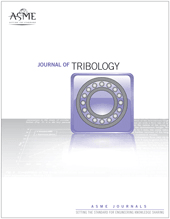
JOURNAL OF TRIBOLOGY-TRANSACTIONS OF THE ASME
Advancing the Frontiers of Tribology ResearchJOURNAL OF TRIBOLOGY-TRANSACTIONS OF THE ASME, published by the esteemed American Society of Mechanical Engineers (ASME), is a prominent peer-reviewed journal dedicated to the intricate study of tribological phenomena and their impact on mechanical systems. With an ISSN of 0742-4787 and an E-ISSN of 1528-8897, this journal has been a vital resource since its inception in 1967, covering significant developments in mechanical engineering, mechanics of materials, surfaces, and interfaces. Ranked in the Q2 quartile across multiple categories for 2023, including Mechanical Engineering and Surfaces and Interfaces, it reflects a respectable impact within the research community, with Scopus rankings highlighting its stature in various related fields. While it does not offer open access, its contributions to the understanding of wear, lubrication, and surface engineering are invaluable for researchers, professionals, and students alike, fostering advancements in both academic and industrial applications. With a commitment to disseminating high-quality research, this journal continues to be an essential platform for those seeking to push the boundaries of tribology and its applications.
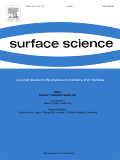
SURFACE SCIENCE
Charting New Territories in Surface ScienceSURFACE SCIENCE is a prominent journal in the fields of Condensed Matter Physics, Materials Chemistry, and Surface Engineering, published by Elsevier in the Netherlands. With an ISSN of 0039-6028 and an E-ISSN of 1879-2758, the journal encompasses a wide range of research related to the physical and chemical properties of surfaces and interfaces, serving as a valuable resource for researchers, professionals, and students alike. As of 2023, it holds a Q3 ranking across multiple categories, indicating its significant contribution to its respective fields, despite room for improvement in its overall impact within the scientific community. Researchers will find that SURFACE SCIENCE provides a platform for innovative and interdisciplinary studies, making it essential for those looking to stay updated on emerging trends and technologies in surface science. While the journal is currently not open access, its reputation and robust indexing reinforce its importance in advancing scientific knowledge and fostering new discoveries.
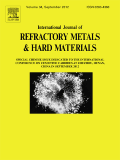
INTERNATIONAL JOURNAL OF REFRACTORY METALS & HARD MATERIALS
Uncovering the potential of refractory materials in technology.INTERNATIONAL JOURNAL OF REFRACTORY METALS & HARD MATERIALS, an esteemed publication by Elsevier Science Ltd, stands at the forefront of materials research, focusing on the development and application of refractory metals and hard materials in various engineering fields. With an impressive impact factor and recognition as a Q1 journal across several categories including Ceramics and Composites, Materials Chemistry, and Mechanical Engineering, it serves as a vital resource for researchers, professionals, and students alike. The journal has been continuously publishing high-quality research since its inception in 1982, with a convergence of developments spanning through to 2024. Its Scopus rankings further emphasize its significance, boasting ranks in the top percentiles of relevant scientific fields. Although it operates under a subscription model, the depth and rigor of the research published within its pages ensures that it remains an invaluable tool for those pursuing innovation and exploration in materials science.